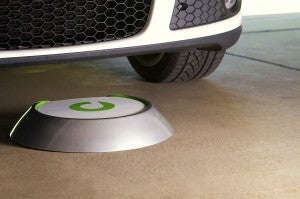EDF Energy Innovation Series Feature #17: Electric Vehicle Charging From Evatran
 Throughout 2012, EDF’s Energy Innovation Series will highlight around 20 innovations across a broad range of energy categories, including smart grid and renewable energy technologies, energy efficiency financing and progressive utilities, to name a few. This series will demonstrate that cost-effective, clean energy solutions are available now and imperative to lowering our dependence on fossil fuels.
Throughout 2012, EDF’s Energy Innovation Series will highlight around 20 innovations across a broad range of energy categories, including smart grid and renewable energy technologies, energy efficiency financing and progressive utilities, to name a few. This series will demonstrate that cost-effective, clean energy solutions are available now and imperative to lowering our dependence on fossil fuels.
Find more information on this featured innovation here.
In the last few years, the first wave of electric vehicles (EVs) has been introduced in the U.S., marking the most significant technology shift in the auto industry’s 100-plus year history. The Chevy Volt and Nissan Leaf have received the most attention, but Ford and Toyota also have models on the market and nearly every major auto manufacturer has at least one partial- or all-electric model in the works. In other words, EVs have arrived.

All EVs can plug directly into a regular 120-volt outlet. But for faster charges, a crop of 240-volt (240v) charging stations are available at Lowe’s, Home Depot and other retailers. Some companies, like Virginia-based Evatran, are taking charging to a whole new level, introducing technologies pioneered in the consumer electronic industry into the garage. The company’s Plugless Power EV charging system takes the plug out of EVs, making the “refueling” process as easy as parking your car.
“Our philosophy is based on ease and simplicity,” said Kevin Beck, vice president of business development and sales at Evatran. “EVs are very simple to own and maintain. Developing the plugging habit is one of the only hassles, and wireless charging is a game changing technology that will make the EV transition even easier.”
The Plugless Power system consists of two parts: a floor sensor connected to a wall-mounted 240v charger and hardware installed under the EV. When the car parks over the sensor, the system uses inductive charging to refuel the car battery – no plugs necessary. The charging time varies by car model, but the Plugless Power system will provide a full charge in the same amount of time as plugging it in.
Wireless, or inductive, charging is already available for some consumer electronic products. Several companies make smart phone cases that allow users to simply place their phones on a “charging mat” instead of searching for a charging cable. EV batteries are a lot bigger, but the technology for Plugless Power is similar.
Inductive charging has its tradeoffs. The process isn’t as efficient as wired charging, meaning that not all the energy that makes it to the wall charger makes it into the car battery. Evatran executives acknowledge that the process isn’t perfect, but the company has already made significant improvements in efficiency and has made it a focal point of their research and development.
EVs provide a remarkable carbon benefit over gasoline. Even an inefficient charging system using 100 percent coal-fired electricity is better for the environment than an inefficient gasoline engine.
Currently, the Plugless Power system will be installed after market by local and certified service centers, but true to its mission of simplicity, Evatran is working with EV manufacturers to provide the feature as an option when customers buy the car, like a navigation system, leather seats or tinted windows. “The goal is to install our system into EVs before customers drive them off the lot.”










